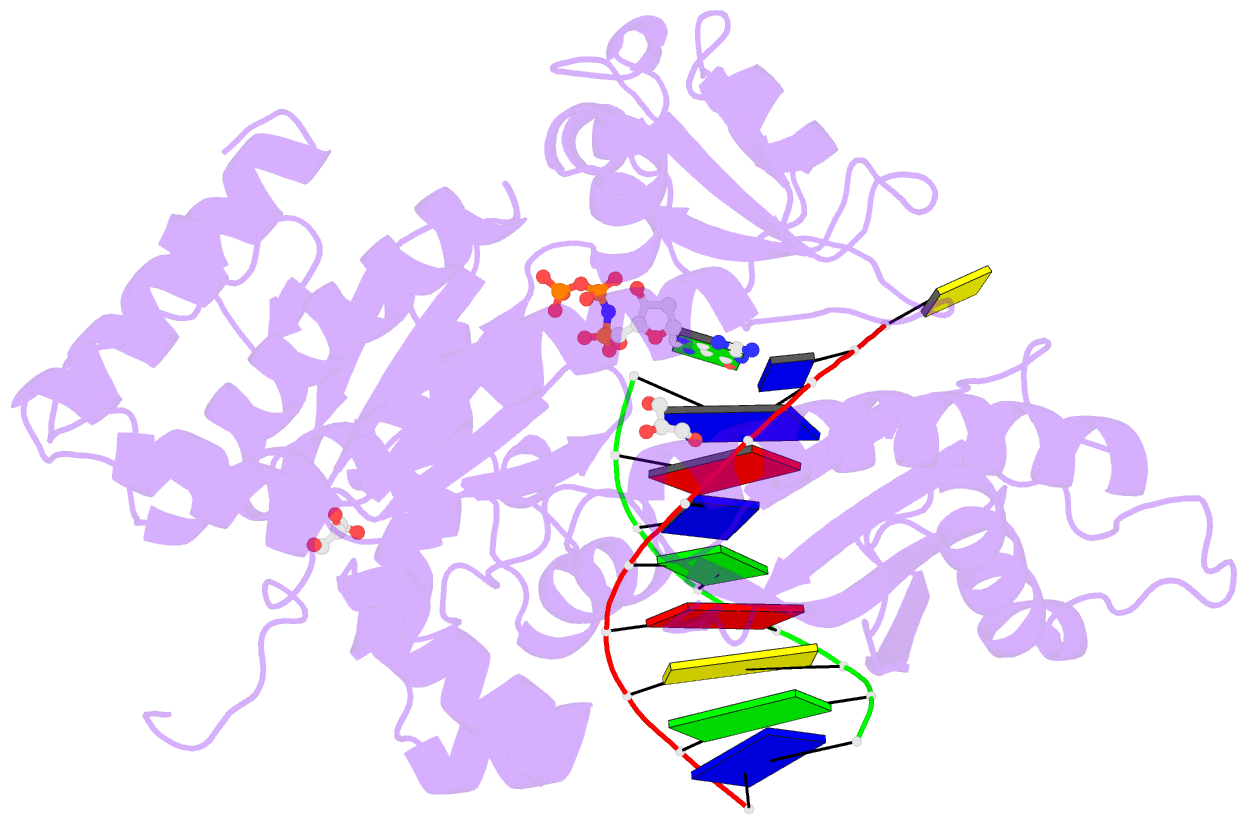Summary information and primary citation
- PDB-id
- 4j9m; SNAP-derived features in text and JSON formats;
DNAproDB
- Class
- transferase-DNA
- Method
- X-ray (2.25 Å)
- Summary
- Human DNA polymerase eta-DNA ternary complex: misincorporation g opposite t after an a at the primer 3' end (aa-g)
- Reference
- Zhao Y, Gregory MT, Biertumpfel C, Hua YJ, Hanaoka F, Yang W (2013): "Mechanism of somatic hypermutation at the WA motif by human DNA polymerase eta." Proc.Natl.Acad.Sci.USA, 110, 8146-8151. doi: 10.1073/pnas.1303126110.
- Abstract
- Somatic hypermutation is programmed base substitutions in the variable regions of Ig genes for high-affinity antibody generation. Two motifs, RGYW and WA (R, purine; Y, pyrimidine; W, A or T), have been found to be somatic hypermutation hotspots. Overwhelming evidence suggests that DNA polymerase η (Pol η) is responsible for converting the WA motif to WG by misincorporating dGTP opposite the templating T. To elucidate the molecular mechanism, crystal structures and kinetics of human Pol η substituting dGTP for dATP in four sequence contexts, TA, AA, GA, and CA, have been determined and compared. The T:dGTP wobble base pair is stabilized by Gln-38 and Arg-61, two uniquely conserved residues among Pol η. Weak base paring of the W (T:A or A:T) at the primer end and their distinct interactions with Pol η lead to misincorporation of G in the WA motif. Between two WA motifs, our kinetic and structural data indicate that A-to-G mutation occurs more readily in the TA context than AA. Finally, Pol η can extend the T:G mispair efficiently to complete the mutagenesis.





